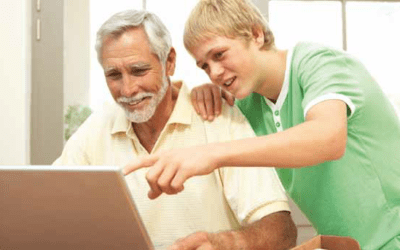There are, of course, a lot of questions that can be asked about which dog to get and how to raise it. Those questions can be answered easily, especially when it’s been proven that dog owners experience less stress and anxiety. Adoption of a new puppy in the family is amazing if one is willing to research and learn how to properly do it. This further leads to the fact that dog owners go to the doctor about 15% less than non-owners. It has also been proven that having a dog means reducing the risk of dying prematurely by around 33%. The things that should be taken into account before getting a dog are allergies, budget, willingness to train the dog, and more.
Want to learn more, keep reading the article by Dr. Med. Vet. Alexandra Baldock.
There are a lot of questions about adopting a dog, choosing a dog, growing a dog, but it’s not much compared to the happiness it brings us.
Swedish researchers have found that pet owners go to the doctor less (-15%), and experience less stress and anxiety. Dogs in particular, with their daily walks, reduce the risk of dying prematurely by 33% and the risk of developing heart disease by 11%. However, adopting a pet is not a decision to be taken lightly. A dog’s lifespan is between 7 years (large dogs) and 15 years (small dogs), and with advances in veterinary medicine, their life expectancy is increasing. Taking in a pet is therefore a decision that is binding for many years. Here are a few questions you might ask yourself before taking the plunge.
1. Are there allergic people in the household?
2. Is our lifestyle suitable for a pet? You will need to walk him every day, at least one hour, in all weathers, and allow time for training and play, as well as for grooming for some breeds. How often do you travel? How can I get him to stay with me when I’m away?
3. What is the budget? The annual costs of a dog (food, accessories, taxes, liability insurance, veterinary costs, health insurance etc.) are between 1500 and 2000 francs per year. Once the decision has been made, you can then ask yourself where to adopt your new companion and, above all, which one to choose. A dog can be adopted from a shelter, giving it a new loving home. On the other hand, these animals may have suffered trauma and have behavioural problems, which will not be suitable for everyone. That said, they have the advantage of being over 6 months old and therefore clean, vaccinated, dewormed and neutered.
Many individuals also offer dogs for adoption; however, the financial aspect may predominate in this type of transaction, at the expense of the health of the puppies or the quality of their development. A quality kennel will be able to offer a certain security, as the genetic traits are carefully selected, both to adhere to the physical criteria of the breed and to the temperament. But which breed to choose? There are over 350 breeds in the world. Fashion sometimes has a major influence on our choice. For example, the number of Dalmatians has risen from 8,170 to 42,816 in one year as a result of the famous cartoon “101 Dalmatians”. The choice of breed should focus on essential aspects such as our habitat, the presence of small children or not, the presence of other animals, our activity rate, the desired temperament. If we are looking for a jogging or play partner, we would not choose a Basset Hound or a Pug, for example, but rather a Shepherd or Retriever. It is important to note that the selection of breeds by man, which has been going on for 200-300 years, can unfortunately lead to health problems. For example, brachycephalic type dogs have been selected to have the flattest nose possible, a trait that gives a much sought after anthropomorphism. However, this conformation can lead to respiratory problems and limited exercise capacity. To avoid this problem, one can turn to dogs from crossbreeding, ensuring genetic diversity and a certain robustness. Now that you have chosen the ideal companion, how do you ensure its well-being and good development at home?
1. Food
Choose the best possible quality and especially one that is adapted to its life stage. You can give him kibble, pâtée, or cook him a home-made ration. The mechanical action of kibbles helps to limit the formation of plaque and they are formulated to provide all the nutritional requirements of the animal. The home-made ration has its advantages but will require a much greater investment of time and you should not hesitate to seek advice from a veterinary nutritionist to avoid deficiencies. Certain foods are forbidden, such as chocolate, grapes and onions, as these are toxic for them. The same applies to a large number of human medicines, so you should never give him anything without first asking his vet for advice.
2. Potty training
Take him out every 2 hours, especially when he wakes up, plays or eats. Reward him when he eliminates in the desired place. You can also associate the act of elimination with a word of your choice, which can serve as a trigger in the future. If caught eliminating inside the house, distract him by clapping or calling him rather than scolding or punishing him.
3. The development of the puppy is divided into 4 main phases.
Between 0 and 8 weeks of age, he will learn good manners (especially not to bite, submission and trust) from his littermates and his mother. From 8 to 16 weeks of age is the ideal time for training; he can be easily impressed and should be introduced to the world and exposed to a wide range of sounds, smells, people and species. This is also the time when he will make his first visit to the vet. He will receive his first vaccination and treatment for internal and external parasites. The choice of health insurance will also be very important. Sexual maturity is between 6 and 12 months, a period of adolescence when your companion will try to test your limits. This is the time to discuss spaying or neutering with your vet.



![CH12768_BANNER-MANCASSOLA-980x180-EN[1]](https://rang-group.ch/wp-content/uploads/2021/05/CH12768_BANNER-MANCASSOLA-980x180-FR1.png?v=1595)






